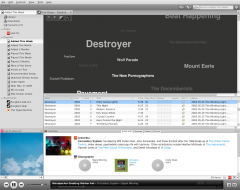Chris Coyier on PostCSS:
We know that specs change. It happens all the time. Seems weird to base a syntax on a non-final spec. What happens when the spec changes? Do you change the language and let existing code break? How is that future-proof? Or support all past formats? Meaning the language isn’t really based on future CSS, it’s based on any experimental idea that was considered?
These have been exactly my thoughts since hearing about CSS post-processors. How can people honestly believe that the code they’re writing is future-proof? Sass source files certainly are prone to “spec rot”, but the CSS they generate isn’t (at least, insofar as anything can be immune to it).
